This article is part of a guide to London from FT Globetrotter
Some insomniacs find solace by counting sheep. The theory is that the simple, rhythmic visualisation helps relax the body and mind. So they close their eyes and let their imagination wander to the countryside, where fluffy white quadrupeds hop over a fence one by one until the human brain tires.
This pastoral scene does not work for me. Instead, I make pasta. I picture a well of flour, a valley of eggs, and I slowly combine the two, eventually forming a dough. If I’m still awake, I start the sauce: chopping, sizzling and simmering until I fall asleep.
Pasta has played a supporting role to my psyche since I was old enough to chew. Fuel for celebrations, relief for a broken heart, it would be my desert-island food; my death-row meal.
This madness began as early as I can remember at my Nonna’s house, where she surely inflicted damage to my ventromedial hypothalamus, the part of the brain that signals fullness. She made the best handmade pasta to have graced planet Earth and, with an arm like a tennis-ball machine, doled out servings of deliciousness until I would explode.
As I became a decent home cook myself, pasta, in its many forms, has continued to give me life. Many others feel the same way. It’s science: pasta might as well be cocaine. Psychologists say that eating food high in fat, salt and sugar activates the brain’s reward system, firing up the synapses with dopamine to make you feel good, just like drugs do. Pasta dishes also tend to trigger most of your five taste buds: salty, savoury, sweet and sour (in the form of acidity from tomatoes, for example).
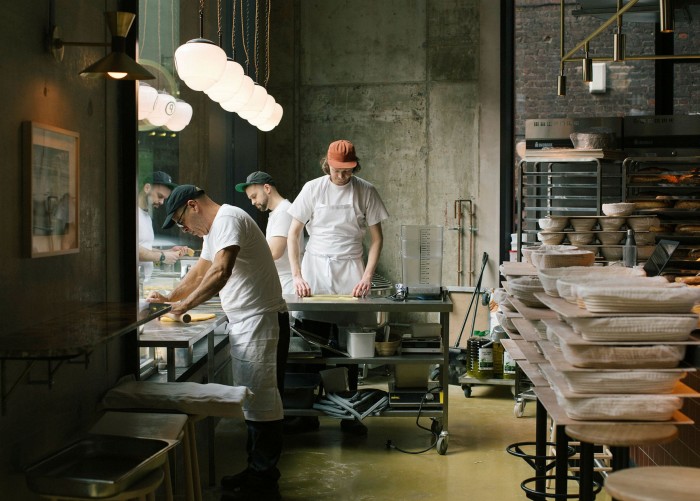
As for what makes a perfect pasta dish, there is plenty of puritanical orthodoxy. I don’t think much of it matters. Above all, pasta should make you happy, and admittedly, sometimes even an average one can hit the spot. That’s amore! But there are a few commandments, which I’ve listed below, alongside some tips on making and buying pasta — and my top places to enjoy it in London, where I live and thus do most of my pasta-eating.
Five Commandments
1. Pasta should, of course, be cooked al dente. It must have texture but should not be visibly undercooked (unless you enjoy gastrointestinal bloating).
2. Don’t substitute spiralised vegetables for pasta. Courgetti is for cowards.
3. There should be no frugality with sauce.
4. Respect the symbiotic relationship between sauce and pasta shape. Tubular shapes such as penne are better suited for hearty, thick sauces, while long, round pastas like spaghetti are best with silkier varieties that coat each strand evenly. If you ever see an abomination like fusilli carbonara, call the police.
5. The price must be right. Good pasta (more on this below) costs more than your standard supermarket variety. It shouldn’t be too cheap at restaurants either: you’re paying for someone to make it from scratch with quality ingredients and other associated costs. But there are limits. I am not interested in a £40 lobster spaghetti that comes with little evidence that a crustacean was harmed and is meant to be Instagrammed.

Making pasta
The best pasta will always be what you make fresh at home. But you need tools: the panache required to hand-roll the old-fashioned way is seemingly unique to geriatric Italians. So skip this part unless you have equipment or a Nonna.
A good starter formula for making pasta dough is, per person: 1 egg + 100g of 00 flour + 1 pinch of salt. (This makes a bit too much but it’s pasta, you’ll manage.) For a stuffed pasta like ravioli, you’ll need more egg yolk (so it’s stickier and stays closed when boiled) but this formula works perfectly well for your basic shapes. Combine the ingredients per my insomniac sequence (you might need a splash of water to help bind it together), wrap the dough and pop it in the fridge for at least 40 minutes before rolling.
As for tools, I recently started using pasta attachments for an electric stand mixer that roll and cut, and I cannot stress enough what a game-changer this is. If you’re serious about making pasta, these are an excellent investment.
Buying pasta
Making pasta from scratch, however much it’s worth it, can ruin your life. I’ve had many weeknight dinners at 11pm because I’ve had the ridiculous inclination to make something arduous like cannelloni after a long work day. So freezers and store cupboards are best kept well stocked.
Here in London we have access to plenty of good pasta purveyors: La Tua Pasta (an FT staff favourite) has stalls at markets across London, supplies many shops and offers home delivery too. La Mia Mamma, a restaurant with branches in Chelsea and Notting Hill, has a nice deli too. For something special, there’s chef Angela Hartnett’s Cafe Murano Pastificio in Covent Garden.
Excellent shops with both good-quality fresh and dry pasta include Lina Stores and I Camisa & Son in Soho, Prezzemolo & Vitale in Notting Hill and Italo in Vauxhall, among others. (NB: My favourite dry-pasta brand is Rummo, one of the few pasta makers to still use traditional processing methods, which result in a better flavour and cook.)
Where to eat pasta in London
With one of the world’s largest Italian diasporas and a slew of renowned Italian and Italophile chefs, there is plenty of good pasta in the UK capital. This list is not nearly exhaustive, but it includes a few of my favourite places across the capital.
Trullo (Islington): The hardy perennial
300-302 St Paul’s Road, London N1 2LH

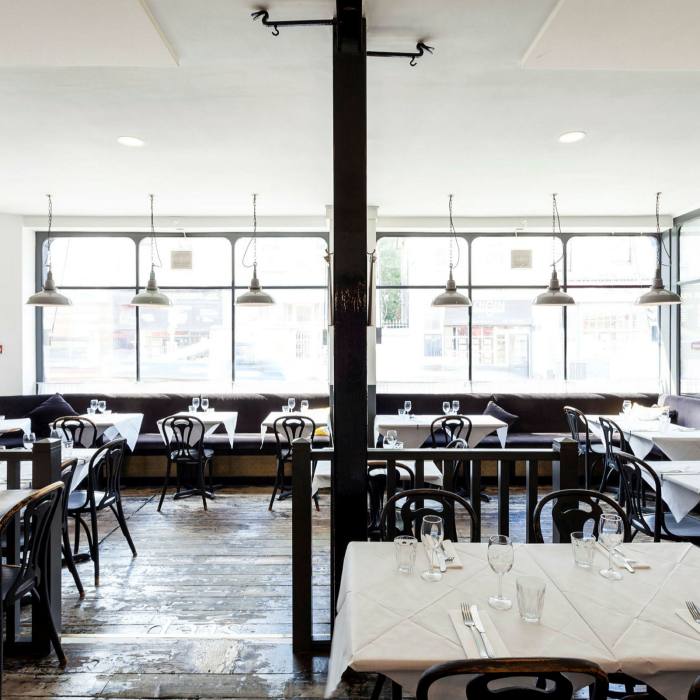
Make a reservation at Trullo because of the primi, but do plan to stay a while: one glance at the short, seasonal Italian-inspired menu will draw you in for four courses. Its signature dish — thick belts of pappardelle smothered with slow-cooked beef shin ragù — is so good I find it impossible to not order a plate every time I dine here. A great meat ragù takes a lot of time and effort to make, so if a restaurant doesn’t get it right, it signals to me that it doesn’t take its pasta seriously. Trullo has no such issue. (Website; Directions)
Padella (Borough): The trendsetter
6 Southwark Street, London SE1 1TQ

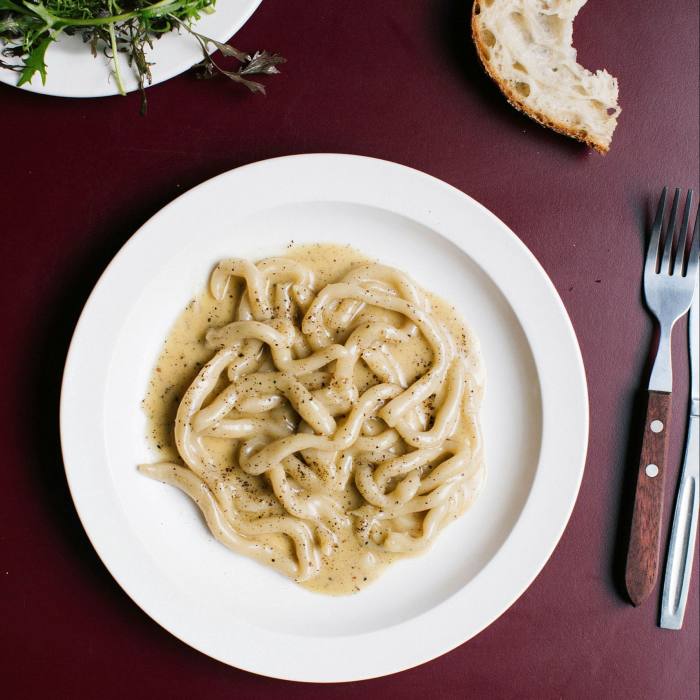
When Padella, Trullo’s sibling restaurant, first opened at Borough Market in 2016, a colleague and I excitedly strolled in, hoovered up plates of cacio e pepe and were back at our desks shortly after, already planning to return to our new find later that week. This might have been a moment in London history: dining at Padella has, ever since, required braving an epic queue for a table. I’ve returned countless times regardless. It’s worth the wait.
Padella is all about pasta: it offers around eight different varieties, from a simple tagliarini with anchovy butter to pappardelle with an eight-hour ragù, bookended by a handful of antipasti options and a couple of desserts. A grazie mille is in order for kicking off the fresh-pasta-bar trend in London; others worth a visit include Pastaio in Soho, La Nonna in Brixton and Flour & Grape, which is around a 10-15 min walk from Padella if you’re too hungry to partake in the great British pastime of queueing. (Website; Directions)
Luca (Clerkenwell): For something fancy
88 St John Street, London EC1M 4EH


There are dozens of upmarket Italian restaurants in London (Locanda Locatelli, Theo Randall, The River Café, Murano and Franco’s, to name a few) so if you are seeking something special, you need not go far. But look no further than Luca, a smart but not at all pretentious restaurant — exactly what upscale Italian should be.
Luca ticks every box: chic decor, a happening bar, charming private dining spaces, pretty outdoor seating, excellent service, and of course, wonderful food and wine. It’s the type of place you could happily take clients or celebrate an anniversary. As for the pasta, this is where to order lobster spaghetti when it’s on the menu: meaty and succulent with smoked datterini tomatoes, a touch of tarragon and a tingle of chilli. Perfetto. (Website; Directions)
Bocca di Lupo (Soho): The crowd-pleaser
12 Archer Street, London W1D 7BB
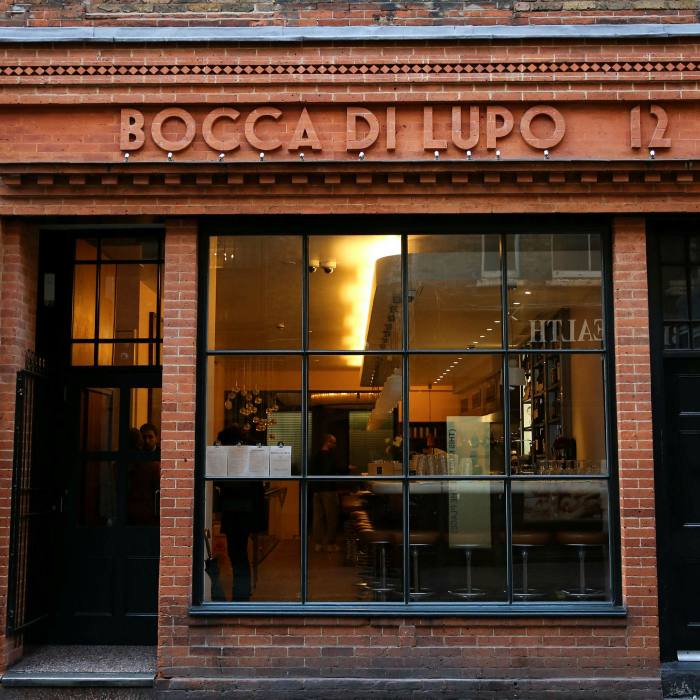

How can you choose a restaurant to please everyone in a part of London that has a billion options ranging from awful to awesome? By going to Bocca di Lupo.
Admittedly, Bocca di Lupo has been around for ages and there’s always a hot new restaurant in Soho that is arguably worth trying instead. But the food — the pasta especially — reliably hits the spot, and the atmosphere will transport you to the bel paese: it’s busy, buzzy and servers swan around at high speed without the slightest crack in their friendly façade.
It’s an easy, crowd-pleasing choice for an evening meal (if you book in advance), but better yet, go for the traditional “worker’s lunch”, excellent value at £15 for a set menu of two hearty courses — an antipasto and a pasta with a side salad. (Not to mention the basket of freshly baked focaccia to fare la scarpetta — ie, to mop it all up with a “little shoe”.) Ten pounds more adds a few extras, including dessert, though the sweet-toothed can also be satisfied across the street at sibling gelateria Gelupo. On a recent visit I enjoyed fried aubergine trickled with orange honey, followed by busiate with pesto trapanese (a Sicilian-style tomato pesto). I left happy, sated and grateful to be wearing trousers with stretch. (Website; Directions)
Campania (Bethnal Green): For something romantico
23 Ezra Street, London E2 7RH
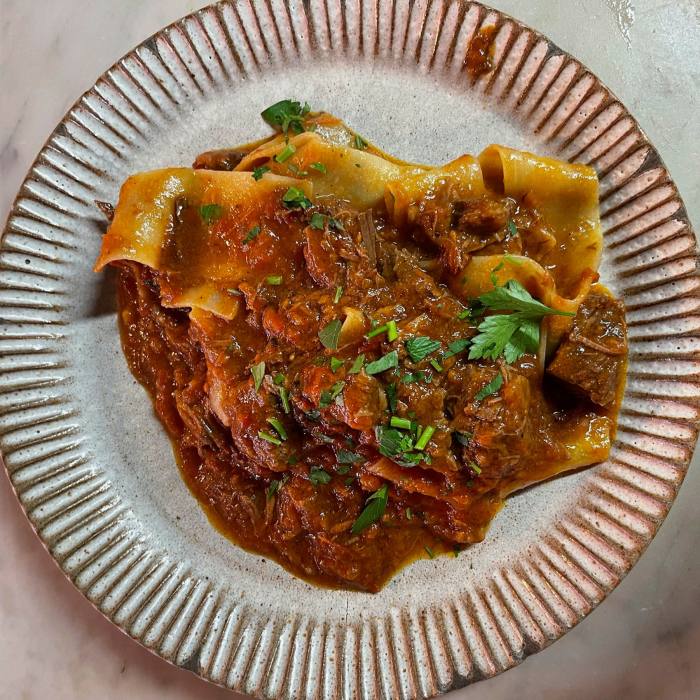

Campania is a romantic little southern-Italian restaurant with an east London streak. It’s housed in a former dairy tucked just behind Columbia Road, a part-cobbled street that connects Shoreditch and Bethnal Green and is best known for its weekly flower market. Fresh pasta is made here all day, every day, for a short, changing menu that typically includes something stuffed (ravioli with sage butter), something saucy (pappardelle with lamb ragù) and something with seafood (scialatielli allo scoglio). Diners are also offered a grater and a wedge of Parmesan for DIY dusting, which I wholeheartedly appreciate — a welcome contrast to the restraint often employed by servers who sprinkle too sparsely.
Campania is walk-in only on Sundays, when the market is on; if it’s too busy to snatch a table, pick up fare from its adjoining shop — and make a reservation to come back another day. (Website; Directions)
Bancone (Piccadilly): For the solo diner
8-10 Lower James Street, London W1F 9EL


I’m relieved that I don’t work within striking distance of either Bancone’s Piccadilly or Covent Garden outposts. I’d probably eat lunch there several times a week if the option were available — a danger feared more for the waistline than the wallet. Bancone serves big portions of excellent pasta at a reasonable price.
Diners can perch at one of the restaurant’s marble countertops, which offer views of fresh pasta being rolled, cut and assembled in the open kitchen or of Lower St James’s Street. (Plush leather booths are available too.) Bancone is best known for its luscious silk-handkerchief pasta with walnut butter and confit egg yolk (a real feast for the senses), but do not miss the mafalde: a long, thick, ribbon-like pasta with curls along the edges that capture sauce — spicy pork, ’nduja and fennel ragù — like octopus tentacles. Sauce too is served in heaps, because Bancone follows the commandments. The result is pasta heaven. (Website; Directions)
Where are your favourite places for pasta in London? Share them in the comments
For more pieces like this visit ft.com/globetrotter or read our guide to the UK capital, London with the FT
Follow FT Globetrotter on Instagram at @FTGlobetrotter
Stay connected with us on social media platform for instant update click here to join our Twitter, & Facebook
We are now on Telegram. Click here to join our channel (@TechiUpdate) and stay updated with the latest Technology headlines.
For all the latest Travel News Click Here
